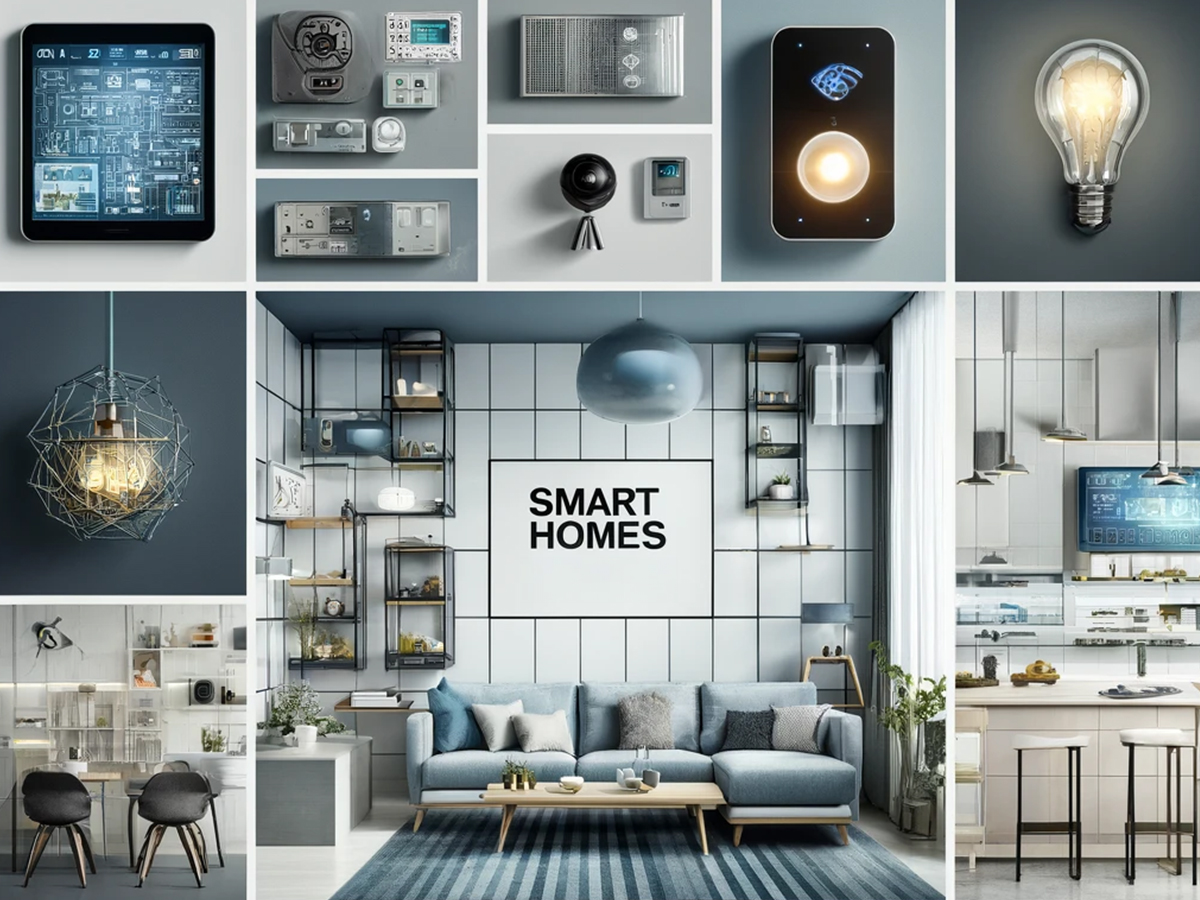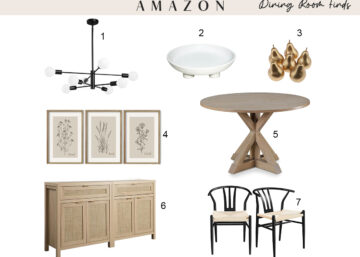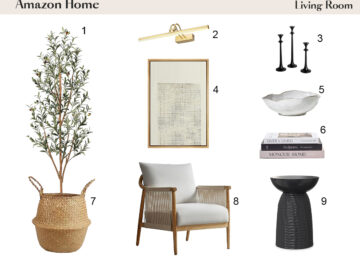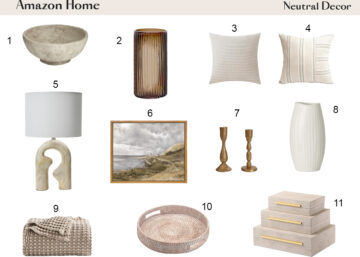Smart Homes: Integrating Technology into Your Interior Design
The Fundamentals of Smart Home Technology
Understanding Smart Home Concepts
Smart homes represent the convergence of interior design with advanced technology, creating environments that are not only visually appealing but also immensely functional. At its core, a smart home utilizes the Internet to connect various devices and appliances within a household, allowing them to communicate with each other and be managed remotely. This integration goes beyond conventional automation to include a network of sensors, actuators, and bits of intelligence spread throughout the home, forming a cohesive system geared towards enhancing the living experience.
The concept of a smart home is often visualized simply as using a smartphone to control lighting or temperature. However, the real depth of smart home technology lies in its ability to learn from user behaviors, anticipate needs, and adapt to changes dynamically, thereby not just responding to commands but actively predicting the needs of the occupants.
Benefits of Smart Home Integration
The benefits of integrating smart technology into home design extend beyond the obvious perks of convenience and energy efficiency. One of the lesser-discussed advantages is the potential for design optimization. Smart technology can collect data about how spaces are used, which can be invaluable for architects and interior designers. This data allows professionals to tailor designs that genuinely reflect the practical usage of each room, ensuring that no space is wasted, and each area is optimized for its intended purpose.
Another significant benefit is the enhancement of accessibility. Smart homes can be particularly transformative for individuals with disabilities or mobility issues, offering them greater independence. Automated systems can control everything from doors and windows to sophisticated security features, all of which can be operated from simple, user-friendly interfaces.
Moreover, smart homes contribute to psychological comfort and security. The ability to control and monitor one’s environment effortlessly not only reduces physical strain but also provides a mental peace of mind. Knowing that you can check on your home, customize settings instantly, and be alerted to any unusual activity provides a level of security that traditional homes cannot match.
By incorporating smart home technology, designers and architects are not just installing futuristic gadgets; they are fundamentally rethinking how environments interact with their occupants, leading to spaces that are more intuitive, responsive, and aligned with the needs of modern lifestyles. This approach marks a significant shift in traditional interior design, heralding a new era where technology and design merge to create smarter, more adaptive living spaces.
Planning for Smart Home Integration
Initial Considerations
When integrating smart technology into a home design, the planning stage is crucial. It lays the groundwork for a seamless fusion of aesthetics and functionality that will define the living space. Before embarking on this journey, several factors need careful consideration to ensure that the technology enhances the home without compromising design integrity.
Assessing Current Infrastructure: A thorough assessment of the existing electrical and network infrastructure is vital. Smart home devices require robust Wi-Fi and often additional wiring. Homes not initially built with smart technology in mind may need upgrades or alterations to support these systems.
Setting Clear Objectives: Homeowners and designers must define what they aim to achieve with smart home technology. Whether the focus is on energy efficiency, security, convenience, or all of the above, having clear goals helps guide the selection of technologies and the design process.
Budget Planning: Integrating smart technology can range from relatively inexpensive to highly costly, depending on the scope. Budget constraints will influence which technologies are incorporated and how extensive the integration will be.
Long-term Scalability: It’s also wise to consider the future. Technology evolves rapidly, and the chosen system should be adaptable and scalable. A good plan accommodates future upgrades and expansions without requiring a complete overhaul.
Choosing the Right Technologies
Selecting the appropriate technologies is perhaps the most technical aspect of planning a smart home. The market is saturated with gadgets that promise to revolutionize daily living, but not all of them will be beneficial or necessary for every project.
Compatibility: Ensuring that all components of the smart home system are compatible with each other is crucial. This includes compatibility with existing appliances and systems if they are not being entirely replaced.
User-Friendliness: The technology chosen must be accessible to all users, including those not tech-savvy. Complex systems that are difficult to operate can detract from the comfort and efficiency that smart homes are supposed to provide.
Security: As homes become smarter, they also become more vulnerable to cyber threats. Security should be a top priority in the planning phase, with robust measures in place to protect the home’s network and the data it generates.
Implementation Strategy
The actual implementation of smart home technology requires a detailed strategy to integrate devices without disrupting the home’s design aesthetic.
Phased Implementation: For many, particularly in large homes or projects with tight budgets, implementing smart technology in phases is practical. This approach allows homeowners to spread out the cost over time and make adjustments based on the effectiveness of the initial phases.
Professional Collaboration: While DIY smart home installations are popular, professional installation can be essential for extensive integrations. Collaborating with experts in smart technology ensures that the systems not only function correctly but are also aesthetically pleasing and well-integrated into the overall design.
Testing and Troubleshooting: Before finalizing the project, a comprehensive testing phase is crucial. This phase helps identify any issues with the system integration, from functionality failures to potential improvements in user interface design.
Training and Documentation: Providing thorough training and detailed documentation for the homeowners is a final, often overlooked step. Residents must feel comfortable and confident in using their new smart systems to truly enjoy the benefits.
By meticulously planning and selecting the right technologies, smart home integration can be a transformative process that marries the practicality of modern technology with the personal touch of traditional home design, creating spaces that are not only intelligent but also intimately customized to the needs and desires of their inhabitants.
Smart Technology and Interior Design
Aesthetic Integration
The integration of smart technology into interior design requires a delicate balance to maintain aesthetic appeal while embedding the functional benefits of modern technology. It’s not just about placing devices strategically; it’s about integrating these technologies so that they enhance the interior without dominating it.
Designing with Discretion: Many smart home devices are designed with aesthetics in mind, offering minimalistic and sleek appearances that can blend with a variety of decor styles. Designers can take advantage of these designs, incorporating devices such as smart speakers, thermostats, and lighting systems that complement the interior theme rather than disrupt it.
Customizable Solutions: Some smart home technologies offer customizable appearances, including interchangeable faceplates or color schemes that can be matched with the interior palette. Utilizing these options allows designers to maintain a cohesive look throughout the home, ensuring that the technology enhances rather than detracts from the design.
Hidden Technologies: Where possible, embedding technology into furnishings or architecture can preserve the aesthetic integrity of a space. For example, speakers can be built into walls or ceilings, and projectors can be recessed or hidden when not in use. This approach ensures that the technology does not interrupt the visual flow of the room.
Functional Design with Smart Features
Smart technology not only adds a layer of convenience but also enhances the functionality of living spaces, making them more adaptable to the needs of the occupants. The key is to plan spaces that are built around both the functionality of smart technology and the comfort of the inhabitants.
Intelligent Room Layouts: The placement of furniture and the layout of rooms should consider the optimal usage of smart devices. For example, ensuring that seating areas are conducive to voice-controlled devices or optimizing room layouts for sound distribution from smart speakers.
Enhancing User Experience: Design elements should enhance the interaction with smart technologies. For instance, pathways can be designed with motion sensor lights for better visibility and safety. Similarly, heating elements like smart thermostats can be placed in areas where they can best regulate temperature without interference from other heat sources.
Zoning for Efficiency: Smart technologies allow for the zoning of heating, cooling, and lighting, enabling different areas of a home to operate independently based on use. Designers can define these zones not just for energy efficiency but also to create an atmosphere, using lighting and climate controls to alter the ambiance of a space according to its use.
Bridging Functionality with Style
Ultimately, the goal of integrating smart technology into interior design is not just to make homes smarter or more efficient but to create spaces that are deeply aligned with the lifestyles and preferences of those who inhabit them. This requires a design approach that sees technology and aesthetics not as opposing forces but as collaborative elements that enhance the living environment.
By understanding the capabilities of smart home technology and thoughtfully incorporating these elements into designs, interior designers can craft spaces that are both beautifully designed and technologically advanced, offering comfort, convenience, and a modern lifestyle that today’s homeowners and commercial clients seek. This balanced approach is what sets apart homes that are merely equipped with technology from those that truly embody the future of living.
Innovative Smart Home Features to Consider
In the rapidly evolving field of smart home technology, staying abreast of the most innovative features can offer homeowners not just convenience and efficiency, but also a glimpse into the future of residential living. For architects, designers, and developers, being informed about these advancements is crucial for designing spaces that are both functional and ahead of their time.
Cutting-edge Smart Appliances
The modern home is increasingly filled with devices that go beyond simple functionality to enhance lifestyle, health, and environmental sustainability. Here are some groundbreaking appliances and systems that are redefining what it means to live in a smart home.
Smart Kitchens: Advanced smart kitchens incorporate appliances that can connect to the internet, allowing for features like remote monitoring and control, integration with recipes, and automated cooking processes. Imagine an oven that preheats itself just in time for your arrival home, or a refrigerator that keeps track of your groceries and suggests recipes based on what’s inside.
Health-Enhancing Technologies: Air purifiers have evolved to not only filter out pollutants but also monitor air quality and adjust settings automatically for optimal air conditions. Water purification systems, too, are becoming more sophisticated, capable of removing contaminants while also adding necessary minerals, offering health benefits directly from the tap.
Entertainment Integration: Home entertainment systems are now capable of personalizing viewing and listening experiences. Smart TVs and sound systems can adjust their output based on who is watching or listening, adapting picture settings, volume, and even content recommendations to individual preferences.
Automation for Comfort and Efficiency
Automation in smart homes is advancing beyond programmable thermostats and automated lighting. The new generation of smart homes incorporates deeper learning about the inhabitants’ habits and preferences, automating tasks in more nuanced and environmentally conscious ways.
Climate Responsive Technologies: Beyond simple temperature control, smart thermostats can now adjust based on the number of people in a room, the weather outside, and even the specific preferences of residents at different times of the day. Windows and blinds can automatically adjust to optimize natural light while minimizing heat loss or gain, contributing to both comfort and energy savings.
Adaptive Lighting Systems: Lighting systems that not only turn on and off automatically but also adjust their brightness and color temperature throughout the day can support natural circadian rhythms, enhance mood, and increase productivity.
Smart Gardening Systems: For properties with gardens or lawns, smart irrigation systems can regulate water usage based on soil moisture levels and weather predictions, promoting water conservation while maintaining landscape aesthetics. Advanced systems might even include drone technology to monitor plant health and growth patterns, offering a high-tech solution to landscape management.
Next-Gen Security Features
As smart homes incorporate more interconnected devices, security becomes increasingly complex but also more capable. The latest innovations in home security not only deter intruders but also anticipate potential threats, offering unparalleled peace of mind.
Biometric Security Systems: Advanced systems now use facial recognition, fingerprint scanning, and even gait analysis to ensure that only authorized individuals can access the home. These systems offer a higher level of security than traditional key or code-based systems and integrate seamlessly with home automation systems to create a secure, user-friendly environment.
Predictive AI Security: Artificial intelligence is being used to predict and prevent security breaches before they occur. By analyzing data from networked devices and cameras, AI can detect unusual patterns that may indicate a security threat, alerting homeowners and authorities instantly.
Disaster Management Integration: Smart homes can be equipped to detect signs of natural disasters such as floods, earthquakes, or fires, taking automated actions such as shutting off gas lines, activating fire suppression systems, and unlocking doors for quick evacuation.
By incorporating these innovative features into their projects, professionals in the realms of architecture, interior design, and real estate development can offer cutting-edge solutions that not only cater to the functional needs of homeowners but also provide a forward-thinking approach to residential living. These advancements ensure that homes are not just habitable spaces but are intelligent environments that enhance the quality of life, safety, and well-being of their inhabitants.
Conclusion: The Future Is Now
The integration of smart home technology has shifted from being a futuristic concept to a present-day reality that significantly impacts how we design, build, and inhabit spaces. This transformation is not just about enhancing functionality or adding convenience; it’s about redefining the very essence of home and commercial environments. Here, we reflect on the importance of these technologies and envision the future of living and working spaces.
Embracing Smart Technology in Design
The adoption of smart technology in interior design and architecture isn’t just a trend; it’s a progression toward more responsive, efficient, and personalized spaces. The benefits we’ve seen—from improved energy management and enhanced security to superior comfort and convenience—are just the beginning. As technology continues to evolve, so will the capabilities of our living and working environments, becoming more attuned to our needs and expectations.
For professionals in architecture, interior design, and real estate, staying abreast of these advancements isn’t optional; it’s essential. Incorporating these technologies into projects not only meets the growing client demand for smarter, more integrated homes but also sets a standard for future developments. This proactive approach ensures that professionals remain competitive and relevant in a rapidly changing industry.
Preparing for a Smart Future
Looking forward, the potential of smart home technology is boundless. We are moving towards more holistic systems that not only connect devices within a home but also integrate them into wider smart city infrastructures, enhancing everything from traffic management to energy distribution. The implications for residential and commercial design are profound, as buildings become nodes in a larger interconnected ecosystem, contributing to more sustainable and efficient urban living.
Moreover, as artificial intelligence and machine learning become more sophisticated, the next generation of smart homes will likely be even more intuitive, learning from inhabitants’ behaviors and adapting to their changing needs with little to no input from the users themselves. This level of automation and personalization will redefine what it means to live in comfort and luxury.
Conclusion
The integration of smart technology in interior design is not just a passing phase—it’s the blueprint for future living. By embracing these innovations, your clients are not merely keeping pace with current trends but are stepping boldly into a future where technology and design converge to create spaces that are not only smart but also sympathetic to the human experience. This is not just the future of home design; it is a vision of the future of living itself, happening right now.








